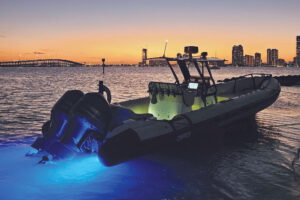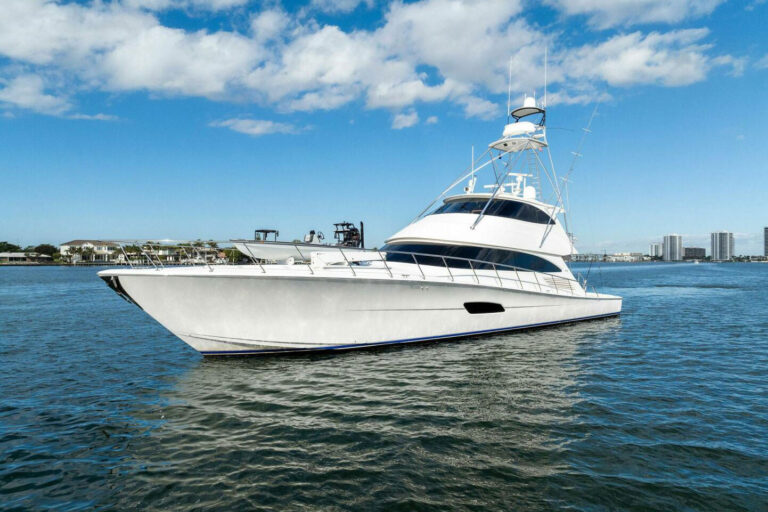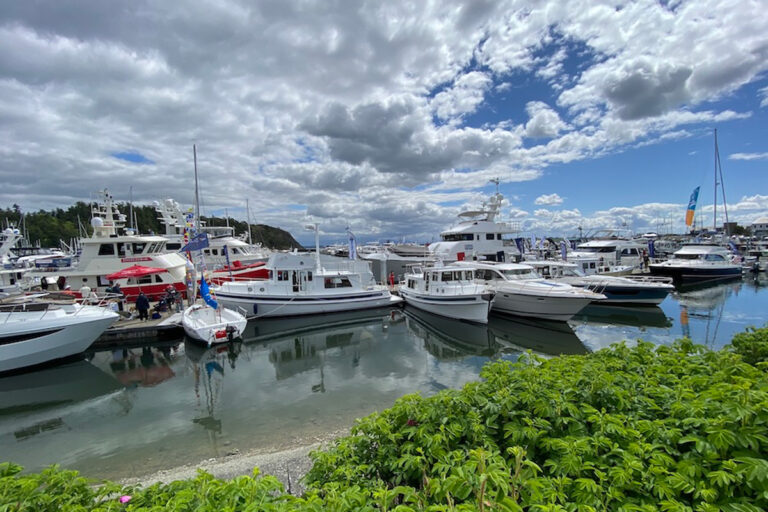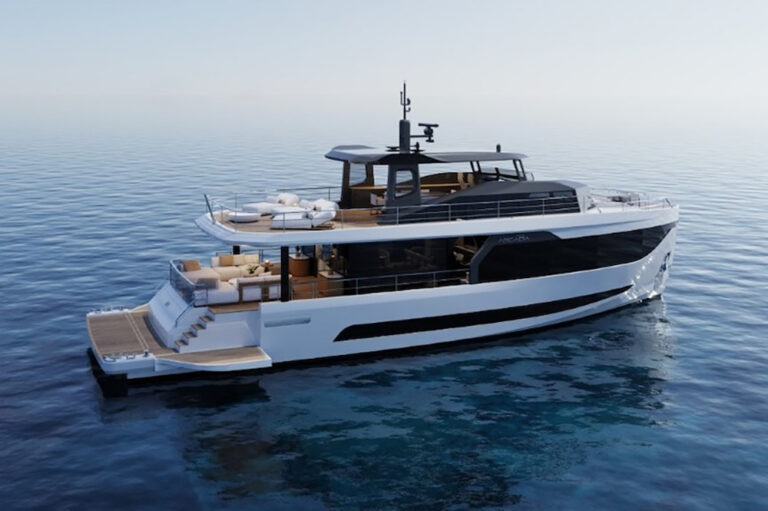We all enjoy a little entertainment when we go to sea. During the Great Gatsby days, a grand piano on board yachts like Thomas Lipton’s Erin was thought of as the height of decadence. His crew included a concert pianist to tinker the ivory keys in the background, accompanied presumably by a tuner to keep the instrument on key as humidity levels changed by the hour.
It was only after the Titanic sank as the band played on that the number of musicians prepared to perform out of sight of land understandably dropped away like the Dow Jones index at the first sign of war. Suddenly, there was a need for music systems on board yachts to replace temperamental minstrels—and it has been that way ever since.
The late ’70s witnessed the introduction of weather-proofed ghetto blasters that could overwhelm a noisy midnight party on a neighboring marina berth or play battle anthems to pump up crews and psych out the opposition during the voyage to the race start.
Nowadays, advances in air-conditioning can keep humidity levels on such an even keel that just about anything goes on some yachts, from surround-sound entertainment systems to fully fledged theaters. Some of us go sailing for a healthy blast of bracing sea air, but there are many more who are just as content to sit in air-conditioned splendor behind smoked glass and watch a movie or events like the America’s Cup on TV, even when the event is unfolding live, less than 100 yards from their sofa.
I have to put my hand up here. At the 1986 12-Meter World Championship in Sardinia, television pundit Gary Jobson and I found ourselves invited aboard the Japanese superyacht BBC Challenge. There, we found not only a Yamaha grand piano that could be programmed via a floppy disk drive to play any piece of music perfectly, but also a ballroom that, at the flick of a switch, was converted into a blacked-out theater. They say viewing America’s Cup yachts racing is akin to watching paint dry. It certainly was then, because there was no wind that week, and much to the chagrin of our keen young PR hostesses, Gary and I wiled away the time catching up on the latest movie releases.
Today, computerized integrated circuitry, a touch-control high-definition screen in each cabin, a terabyte hard drive and an INMARSAT satellite dish allows guests (and crew) to dial up a wide range of music and films or watch whatever satellite TV channel they care to see, wherever they are in the world. Even better, complex software-driven systems developed by companies like Commandscape in California and Linn in Scotland have built-in self-diagnostics that allow service agents to interrogate the systems and repair or replace software components on-line, wherever the vessel might be in the world.
Jim Clark, the Silicon Graphics and Netscape founder, was one to set benchmarks in this field when he commissioned Royal Huisman Shipyard in the Netherlands to build his Frers-designed 155-footer Hyperion. Her highly integrated circuitry links 27 flat screens dotted around the yacht to the vessel’s central command system that monitors and controls everything from air-conditioning and engine management, to the individual choice of film and music in each cabin.
The system controls everything from sail-setting, navigation and communications as well. Each function is governed by a highly reliable Programmable Logic Controller (PLC). The sensors from components within each of these networks send data to their respective PLC. The presentation of this data, and the sending of alarms when something goes wrong, is done by Supervisor Control and Data Acquisition (SCADA) software running on the central UNIX computer. This in turn is networked to the touch screens around the yacht, from the wheelhouse, owner’s stateroom, guest cabins, crew quarters and saloon and even to waterproofed units on deck. Should the network crash, the PLCs and mechanical back-ups are always on call to ensure fail-safe operations.
Adjustment to these systems rarely requires hard-wiring, just software reprogramming. So, within Hyperion’s communications network, the technical gurus back on land can update the SCADA program and any item within the PLC software remotely via satellite link wherever the yacht happens to be in the world.
No sooner had Hyperion been launched, in time to voyage half way around the world for the 2000 America’s Cup in New Zealand, than her owner was already dreaming up his next project, the 295-foot schooner Athena, also built by Royal Huisman. She has her own media lounge which began life on the drawing board as a formal theater and ended up providing a much more relaxing environment with a 60-inch flat- screen plasma to show films or navigation screens, along with soft furnishings and coffee tables that can be moved around at will. Clark’s zest for perfection led to the four surround-sound tower speakers being sent back to their manufacturer in California to be re-tuned after the mahogany veneers, added to their faces by the builder, had changed their acoustic properties. On board Hyperion, the wide range of music and films stored on Athena’s central hard drive can also be accessed by touch screen in any of the cabins.
The problem with all this high-end technology is that it has to be planned for during the design stage. Unlike houses with wooden frames and dry walling, retrofitting a yacht’s computer system, wiring and indeed the large flat screens is near impossible to do after the fact. Nor is it easy to provide a system to darken rooms to give the TV screens a fighting chance to be seen.
Then there is the issue of where to fit the screens. On Antares, a 131-foot Bill Dixon-designed ketch also built at Royal Huisman, interior designer Dick Young has cunningly hidden the plasma screens to pop up from within the furniture.
It also helps to have more than just a passing knowledge of microprocessors. The owner of Bare Necessities, an Oyster 82, is also something of a computer buff, so, not surprisingly, flat touch screens, monitoring everything from course to compass heading, adorn every part of the yacht. There is even a bevy of screens (with the touch facility disabled) across the companionway to keep guests informed of the yacht’s position on an electronic chart, wind speed and performance figures, as well as a bird’s-eye view of themselves from a camera at the masthead.
The large plasma screen fitted on the bulkhead wall adjacent to the main companionway hatch is there, quite simply, to distract guests from boredom. Not only can they switch between a large library of films and music tracks, they also can bring up the digital chart and see exactly where they are and, more important perhaps, where they are heading, just like on an airliner.
On a smaller scale, the new Swan 46 features a large flat-screen monitor recessed into the cabin furniture displaying all the sailing instrumentation and electronic charts, which can be pulled out and swiveled when detailed navigation work is required. The benefit is that everyone on board can share in the navigation-and-system-monitoring experience. The screen also doubles as a TV/DVD for general entertainment viewed from the dinette opposite.








